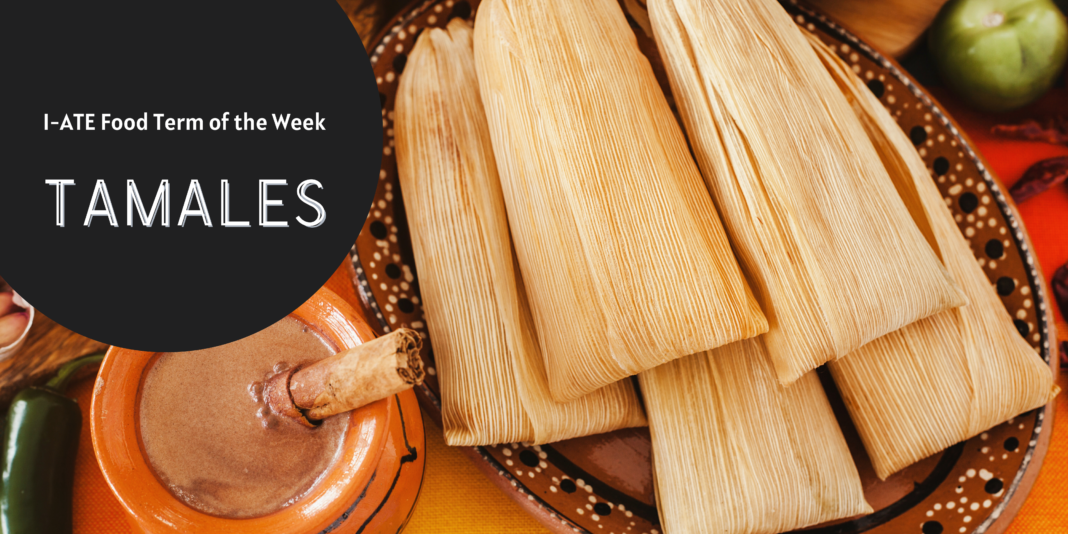Tamales have been an emblematic icon in Latina American cuisine for centuries, even before the Spanish colonies arrived in Mesoamerica, and even before the Aztecs and Mayans arrived in what is now Mexico, Central America and North South America. Can you believe there are existing records tracing tamales back to 8000 B.C.? This makes them one of the oldest foods in history. They used to be carried by warriors to fuel long and extensive hunting and gathering expeditions, as well as a staple in celebrations and festivities – making it the icon food “of the people” in Latin America.
The word tamale originates from tamalii, a word in Nahuatl, an Aztec language, that translates to “wrapped food”. Although every country, region, and even vendor uses their own recipe and ingredients for the filling, they all follow a similar process to create this portable and complete meal. The key is the dough, commonly using maize, but variations with potato, cassava, or rice exist, too, depending on the location. The dough is mixed with the filling of choice, ranging from meat, vegetables, and legumes, to even sweets like fruit jams, chocolate, and caramel. The mix is then wrapped in banana leaves or corn husks and steamed or even roasted over the fire.
The variety and diversity of tamales throughout the continent is quite mesmerizing, showcasing the uniqueness of each culture. According to scholar-chef Ricardo Muñoz Zurita, there are at least 350 varieties in Mexico alone, but then you have other types all the way south.
- In Guatemala they have the pache, tamales with a potato dough mixed with their tomato sofrito called recado.
- The nacatamales in Nicaragua which are filled with pork or chicken, potatoes, olives, capers, prunes, and even peppermint.
- The hallacas in Venezuela which are only consumed during Christmas time.
- The Tamalitos de Pipian from Colombia are smaller in size and have a spicy peanut filling that could be enjoyed any day.
- The humitas in Peru are made of choclo (Peruvian corn), making them slightly sweet.
- The bollos in Belize are prepared with hoja santa, or sacred leaf, an aromatic herb used for medicinal purposes.
- The pamonha in Brazil are sweet from the sweet maize whisked in coconut milk.
Over the centuries, tamales have been celebrated and enjoyed for their versatility and comforting flavours – they are culturally so precious, they were even gifted to the gods. Now that you have learned all about tamales, and are curious to try them, try to venture into making them on your own.
References
Kurtz, M., 2022. The History of Tamales – A New Mexico Tradition. [online] Pueblo Bonito Bed & Breakfast Inn, Santa Fe, New Mexico. Available at: <https://www.pueblobonitoinn.com/history-of-tamales-a-new-mexico-tradition-of-hospitality> [Accessed 12 October 2022].
Tamalli -. 2022. TAMALES EN LATINOAMÉRICA – Tamalli. [online] Available at: <https://tamalli.com/tamales-en-latinoamerica/> [Accessed 12 October 2022].
Texas Monthly. 2022. With 350 Varieties, Tamales Are as Diverse as They Are Delectable. [online] Available at: <https://www.texasmonthly.com/food/tamales-diverse-delicious/> [Accessed 12 October 2022].
The Spruce Eats. 2022. Tamales – Recipes and Tips for Makig Them. [online] Available at: <https://www.thespruceeats.com/all-about-tamales-3029232> [Accessed 12 October 2022].
Written by Sophie Echeverry

Born and raised in Colombia, Sophie acquired a B.B.A. in International Business and Marketing in San Francisco, CA. She then moved to Austin, Texas, where she worked in a Business and Culture Etiquette consulting firm, and a Slow Travel Agency. She obtained her MBA in International Marketing in Geneva, Switzerland and now is pursuing a Master’s in Food Communication and Marketing at the University of Gastronomic Sciences in Italy, founded in partnership with Slow Food. She has lived in 5 countries, mastered 3 languages, gained experience interacting with diverse cultures and has become a passionate foodie!

